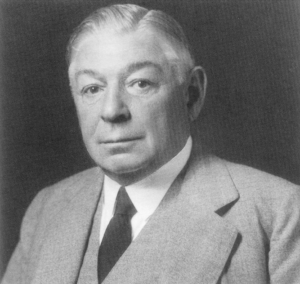South County: Arvida

In 1956 Arthur Vining Davis (1867-1962) purchased 850 acres, including the Boca Raton Hotel and Club, from J. Myer Schine for $22.5 million. Davis, former chairman of the Aluminum Company of America (Alcoa), spent another million to improve the hotel, which Addison Mizner had built with others in 1926. To attract an elite clientele, he brought in golfer Sam Snead and tennis pro Fred Perry, and built polo fields on the property abutting the hotel. A local real estate boom resulted when Davis purchased another 1,500 acres in the surrounding rural community of Boca Raton.
Davis transferred all of his property to a new public corporation, Arvida, in 1958, while retaining 60% of the stock. The stock sales provided capital to develop the $5 million Royal Palm Yacht and Country Club, the first planned unit development (PUD) in Boca Raton and the first in the nation to bury utilities underground. The subdivision replaced the polo fields, which Davis spent a half-million dollars relocating to Glades Road. Davis also removed one golf course from the hotel to make room for Royal Palm.
North of Glades Road, Davis created University Park, a company town of almost 5,000 acres that was incorporated in 1959 and annexed to Boca Raton in 1971. Today the former town is occupied by St. Andrew’s School, Lynn University, and subdivisions.
Although Davis died in 1962, Arvida continued its impact on Boca Raton long after. IBM Corporation followed other big industry into Palm Beach County in 1966 and bought 565 acres from Arvida for a two million-square-foot complex within University Park. In 1978 the 850-acre Arvida Park of Commerce opened at Yamato Road and Congress Avenue. Arvida’s name is seen on many landmarks throughout Boca Raton and in nearby Delray Beach.
Boca Raton tries to Control Growth
In the 1970s, the people of Boca Raton looked to the past and the future and took action to protect both. First, in 1972 the Boca Raton Historical Society (BRHS) was founded as a project of the Junior Service League.
Then voters passed a referendum imposing a 40,000 dwelling-unit growth cap to limit the city’s expansion. In 1976 a Palm Beach County Circuit Court judge ruled the cap an arbitrary figure but allowed it to remain until all legal appeals were exhausted.
In 1979, while the issue was pending in higher courts, Boca Raton adopted a land use plan that set density ceilings on all properties, to achieve the goals of the growth cap. The city spent over a million dollars in appeals to the Florida and U.S. Supreme Courts before giving up in 1980.

